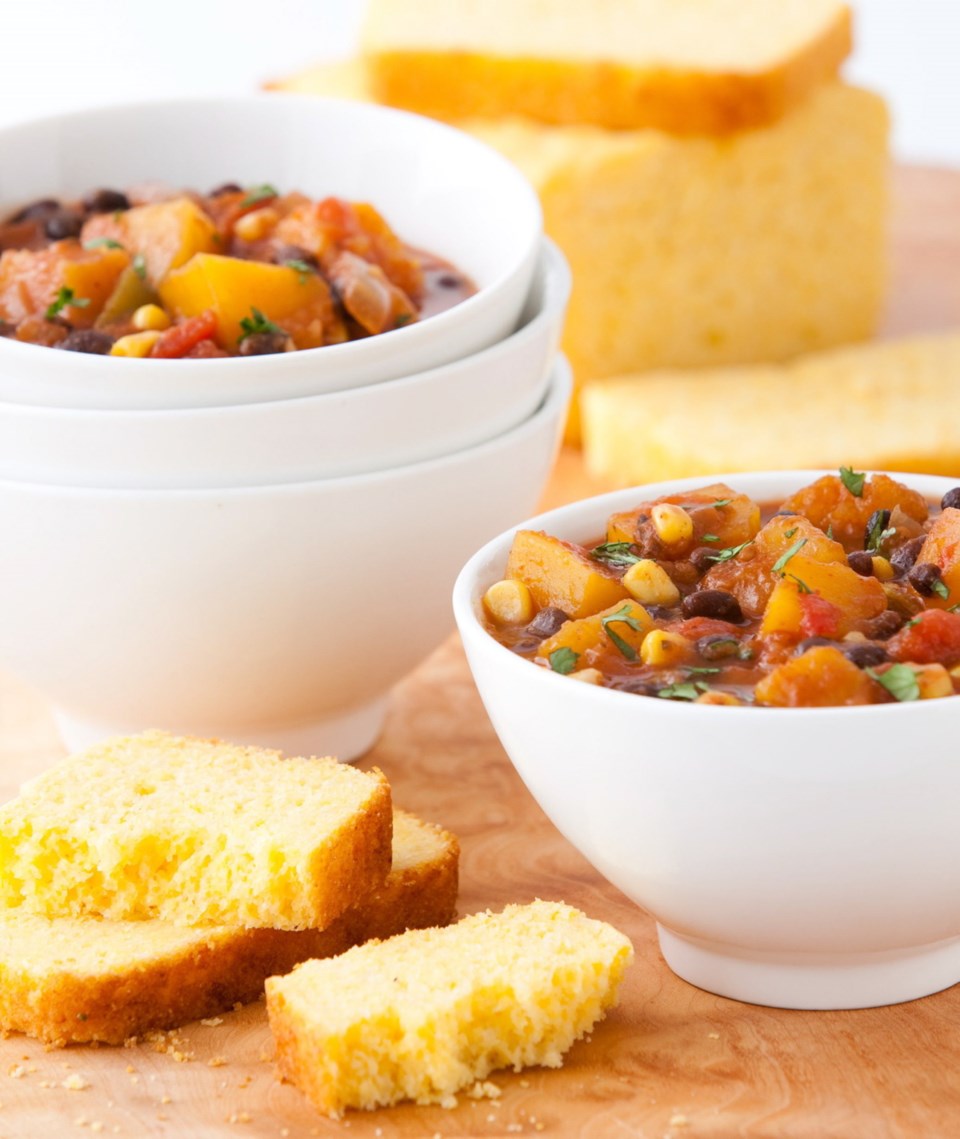 Dear Eric: I wonder how slow cookers stack up against cooking our vegetables lightly these days, so as not to destroy the vitamins and vegetables. Any thoughts on that?
Dear Eric: I wonder how slow cookers stack up against cooking our vegetables lightly these days, so as not to destroy the vitamins and vegetables. Any thoughts on that?
Dolores
Dolores, the place to start answering your query is to describe what a slow cooker is and how it works, as that will provide one of the clues as to what happens to vegetables cooked in one.
This tabletop kitchen appliance consists of a metal container that has a heating element inside its walls. A ceramic cooking pot sits inside that container and when the slow cooker is turned on, the element heats up the pot, but does not directly touch it. That quality, and the thickness of the pot, promotes even cooking and prevents foods from sticking and burning.
As the food warms in the pot, it rises to a food-safe cooking temperature of about 185 F (85 C) for the low setting, and about 280 F (138 C) for the high setting. As the food cooks, steam builds up, rises, hits the top of the lid and falls back onto the food, keeping it moist and preventing it from drying out, even after hours of cooking.
Slow cookers are so named because foods placed in them do cook slowly, barely simmering. The upside to that, of course, is that you can put the dish you’re making into your slow cooker in the morning, turn it on and then go off to work or elsewhere for many hours and return to a meal that’s hot and ready to go.
While you’re wait for that food to cook, you might have time to read Harold McGee’s fact-filled book On Food and Cooking: The Science and Lore of the Kitchen. In a section on cooking vegetables, he writes that while cooking destroys some nutrients in food, it can also make many nutrients more easily absorbed.
For example, while some vegetables are slowly cooking for hours in a slow cooker, the heat and other factors will cause nutrients to leach out of them.
However, according to an article by registered dietitian Jessica Kovarik published on the healthy-living website livestrong.com, the lower heat environment of a slow cooker might not destroy as many nutrients as other methods, such as steaming or boiling. Kovarik adds that another benefit is that the nutrients leaching out can often be captured in the sauce or liquid.
According to McGee’s book, cooking vegetables, even until they’re well done, can have several nutritional benefits. For example, he says, it eliminates potentially harmful microbes. By softening and concentrating foods, it also makes them easier to eat in significant quantities.
Cooking also improves the availability of some important nutrients, such as carotenoid pigments, found in vegetables such as carrots, squash, turnip, kale and other dark leafy greens, by breaking down the plants’ cell walls and releasing nutrients clinging to them. Cooked vegetables can also supply more beta-carotene, lycopene or other antioxidants than some raw vegetables.
Dolores, this is a complicated question to answer in a short column like this, but the bottom line is that vegetables enjoyed both raw, such as in a salad, and cooked — whether in a slow cooker, steamer, microwave or roasting pan — will provide you with a wide array of nutrients. If you eat a generous and balanced amount of a variety of vegetables both raw and cooked, you’ll be doing your body a favour and broadening the tasty ways you can enjoy them.
Squash and Black Bean Chili
This chili is from my book Everyone Can Cook Slow Cooker Meals. It’s bursting with cubes of orange squash and with other vegetables, beans and spices. Who needs meat? This dish tastes so good, you’ll want another bowl, even if you’re a confirmed meat-eater.
Preparation time: 25 minutes
Slow cooker time: six hours
Makes: six to eight servings
1 (28 oz./796 mL) can diced tomatoes
1 (14 oz./398 mL) can tomato sauce
1 cup vegetable stock or beer
4 cups peeled, cubed banana or butternut squash (see Note)
1 (19 oz./540 mL) can black beans, drained, rinsed in cold water and drained again
1 medium onion, diced (see Note)
1 medium green bell pepper, diced
1 cup (250 mL) fresh or frozen corn kernels
1-2 garlic cloves, minced
2 tsp chili powder
1 tsp ground cumin
1 tsp dried oregano
• hot pepper sauce to taste
• salt and freshly ground black pepper to taste
3 Tbsp chopped fresh cilantro or sliced green onion
Combine the diced tomatoes, tomato sauce, stock or beer, squash, black beans, onion, bell pepper, corn, garlic, chili powder, cumin, oregano and hot pepper sauce in your slow cooker. Cover and cook on the low setting for six hours, or until the vegetables are tender.
Season the chili with salt and pepper. Sprinkle servings of the stew with cilantro or sliced green onion.
Note: I cut the squash into one-inch cubes. In this recipe, diced means to cut into one-quarter-inch cubes.
Eric’s options: Dress up bowls of this chili with sour cream or yogurt and grated Monterey Jack or cheddar cheese.
Instead of squash, use 4 cups of cubed yam or sweet potato in this recipe. For a spicier chili, add a large jalapeño pepper, seeds removed and flesh finely chopped, at the beginning of cooking.
Eric Akis is the author of The Great Rotisserie Chicken Cookbook (Appetite by Random House). His columns appear in the Life section Wednesday and Sunday.



